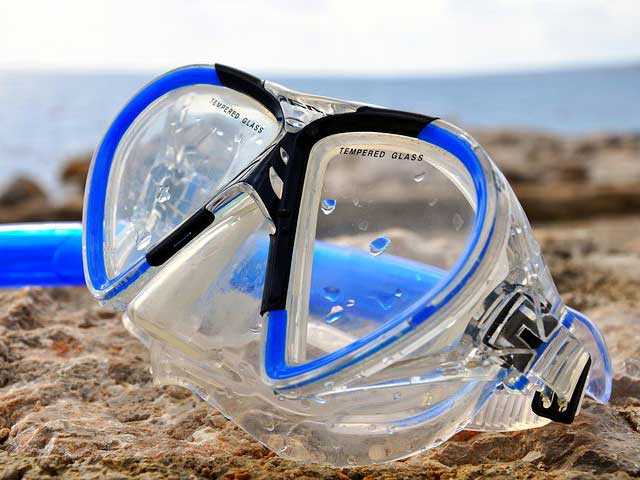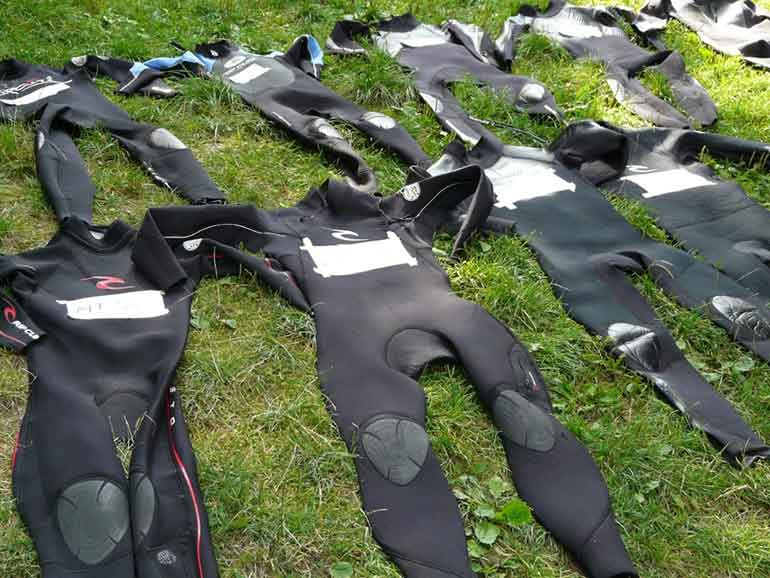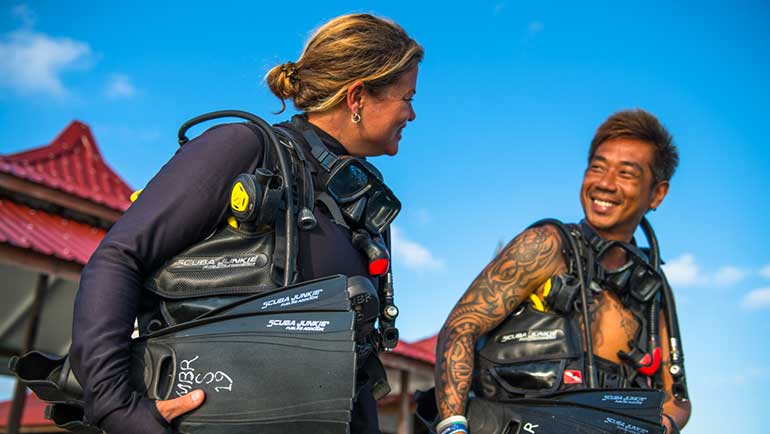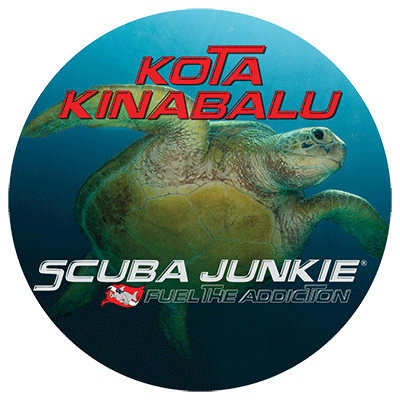The best way to observe a fish is to become a fish.
Jacques Cousteau
Since humans are not natural aquatic creatures, we aren’t able to see, stay or breathe underwater. Therefore, the best way to get to know the underwater world is to immerse ourselves in it by becoming scuba divers. There are 3 components to becoming a competent scuba diver; adequate knowledge, fundamental skills, and a good set of equipment. Let’s look further at diving equipment.
Our eyes aren’t capable of seeing clearly underwater due to the refraction of light through substances of different densities. This is why things look all blurry when we try to open our eyes underwater. We need to wear a mask to solve this problem. The air inside our mask allows our eyes to focus and see things clearly underwater. A snorkel on the other hand comes in handy if we ever need to swim face down on the surface of the water.

Fins are another important part of our diving equipment because fins help us move easily through the water without wasting too much energy. Fins are generally split into two types; open heel and full foot fins. Open heel fins are more commonly used in colder waters as we would normally be wearing booties (diving boots) with them to keep our feet warm. Open heel fins have straps to secure our feet. Full foot fins on the other hand completely cover our feet and are usually used in warmer waters.
When diving we usually wear a wetsuit or a dry suit depending on the temperature. Wetsuits are used in warmer waters. Wetsuits are normally made of neoprene and fit snugly. It helps us keep our bodies warm by restricting the movement of water in and out of our wetsuits. Drysuits on the other hand are used in colder waters and are loose-fitted with rubber seals around the neck, wrists and ankles to restrict water from getting in and getting in contact with our bodies. It works by insulating our bodies with air instead of water. This drastically reduces heat loss from our bodies.

Our regulator is what allows us to breathe underwater. It has a first stage that is connected to our scuba tanks. The first stage regulates the high-pressure air in the scuba tank by lowering it. The other part of the regulator is called the second stage that is inserted into our mouths for us to breathe from. This second stage further regulates the air pressure and allows us to comfortably breathe the air underwater. The most important function of our regulator is how easy it is to breathe from.
Scuba tanks are what store the air we use to breathe. It is generally made of aluminum or steel. It is capable of storing large amounts of air. It comes in various sizes and styles. How long a tank lasts on a dive varies from person to person as it all depends on how efficient we swim (energy saving) and breathe.

Our depth gauge uses the surrounding water pressure to indicate how deep we are and also what the maximum depth we reached on our dive was. Having this information is key to staying well within our diving limits keeping us safe. Our submersible pressure gauge on the other hand is connected to our regulator first stage attached to the scuba tank and tells us how much air we have left in our scuba tank. This ensures that we can end our dives before our air supply gets too low.
As the name suggests, this device controls our buoyancy. It comes in various sizes, brands and styles. Some styles are like a jacket or backpack. It is important to be comfortable with the BCD we are using. How it works is that it is strapped to the scuba tank and connected to the first stage of our regulator via a low-pressure inflator hose to allow us to inflate air into our BCDs from our tank. Inflating enough air into our BCD allow us to float while we are at the surface, when beginning a dive we release air from it to sink and adding small amounts of air into our BCD to control our buoyancy while diving.
There are various styles and brands of dive computers. Some have more functions than others. A dive computers main function is to show us our dive time (how long we’ve been underwater since the start of our current dive), the current depth we are at, and how long we can safely stay at the depth we are at. Other functions that dive computers have based on the type are air supply (how much air we have left in our scuba tanks), digital compass, dive profiles, conservancy settings. A prudent scuba diver monitors their dive computer and makes sure they dive within safe limits!

